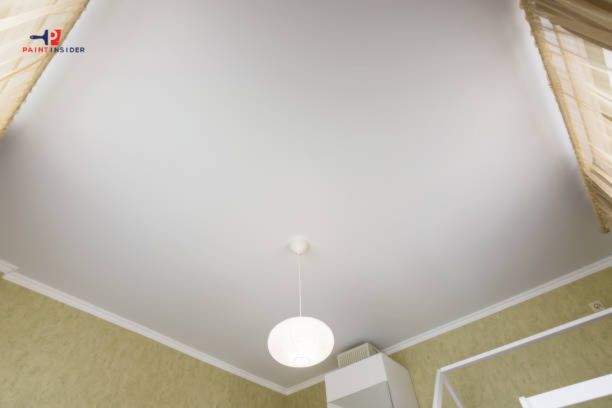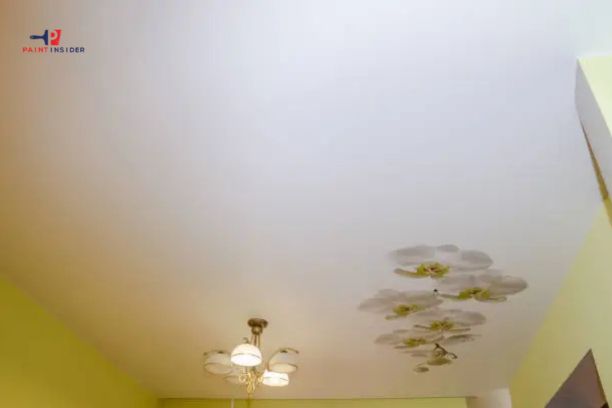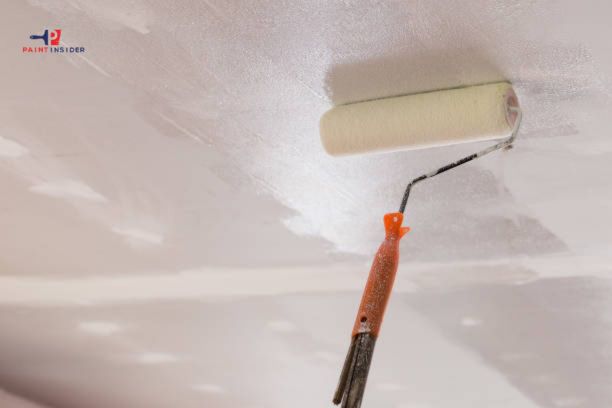Discover the best paint finish for ceilings to achieve a smooth, flawless look. Learn about flat, satin, Eggshell, and gloss finishes, and find expert recommendations for a professional, long-lasting result for What paint finish for ceilings?
Choosing the Right Paint Finish
There are many types of paint finish available for ceilings, your choice of finish should align with the specific needs of each room while reflecting your personal style. Take the time to envision how light interacts with different surfaces and remember: the right finish isn’t just about color, it’s about creating an atmosphere that resonates with how you live.
Flat/Matte Finish: Pros and Cons

A flat matte finish can be a good choice in the world of paint choices, especially when it comes to ceilings. This finish effectively absorbs light rather than reflecting it, creating a soft, diffuse glow that masks imperfections and adds depth to any room. With a flat matte ceiling, you can embrace a calming atmosphere that draws attention upward without overwhelming the space with shine or glare.
Choosing this finish for your ceilings not only elevates aesthetic appeal but also enhances the overall ambiance of your home.
It is often the top choice for ceilings, and for good reason. Its non-reflective quality hides imperfections, ideal for older homes or uneven drywall. This soft, seamless finish enhances ambient light, creating an inviting and calming backdrop for any room.
However, a flat matte finish has trade-offs. It’s less washable than glossier paints, making stains and scuffs harder to remove without damage. Though it hides flaws well, dirt and grime can build up over time. Choosing this finish means balancing its aesthetic charm with practicality, especially in high-use areas.
Eggshell Finish: A Versatile Option

An eggshell finish strikes a perfect balance between sheen and matte, making it an exceptional choice for various surfaces throughout your home. Unlike flat finishes that can absorb light and show imperfections, the slight sheen of eggshell paint enhances color depth while maintaining a soft look. This unique property allows it to reflect just enough light to brighten up spaces without overwhelming the senses, making it ideal for areas like living rooms and bedrooms.
When considering what paint finish for ceilings, many homeowners overlook eggshell as a viable option. However, utilizing this finish on ceilings can create an inviting atmosphere by adding dimension and warmth. It subtly elevates the overall design aesthetic while staying easy to clean perfect for spaces where dust or grime might accumulate over time. Ultimately, the versatility of eggshell finish empowers you to cultivate environments that feel both stylish and cozy, proving that even small choices in decor can make a significant impact.
Satin Finish: Subtle Sheen Benefits

When considering the right paint finish for ceilings, the satin finish emerges as a standout choice due to its understated elegance and practical benefits. Its subtle sheen not only adds a touch of sophistication but also enhances light reflection, making spaces feel larger and more inviting. This reflective quality can illuminate even the dimmest rooms without being overpowering, creating an ambiance that is both warm and welcoming.
Beyond aesthetics, satin finishes offer durability that many flat paints lack. They are easier to clean, which makes them ideal for areas prone to moisture or discoloration like kitchens or bathrooms. Additionally, their resilience against scuffs and marks means your ceiling maintains its fresh look over time with minimal maintenance. For those looking to strike a perfect balance between style and functionality in their home decor, choosing a satin finish for ceilings could just be the transformative detail you need.
Glossy Finish: When to Use It

A glossy finish can elevate spaces in ways you might not expect. It’s often reserved for areas that require durability and cleanliness, such as kitchens and bathrooms, where moisture resistance is vital. However, this finish shines brightest when it’s used to highlight architectural details like moldings or built-in shelves. A subtle hint of gloss on these features can create a striking contrast against matte walls, drawing the eye without overwhelming the space.
When deciding what paint finish for ceilings, consider how light interacts with surfaces. Rooms with ample natural light can benefit from a high-gloss ceiling; it reflects ambient light beautifully, making small spaces feel larger and more open. But don’t overlook its impact in dark corners or cozy nooks an unexpected touch of gloss here can invoke warmth and intimacy while maintaining visual interest. Ultimately, using a glossy finish thoughtfully transforms ordinary areas into fresh focal points in your home design narrative.
Impact of Lighting on Ceiling Finishes
The choice of paint finish for ceilings significantly influences the overall ambiance of a room, and lighting plays a pivotal role in this dynamic.
Flat finishes offer a soft, non-reflective surface that masks imperfections beautifully, allowing overhead lights to create a cozy and inviting atmosphere. However, their lack of sheen can lead to darker zones in spaces lacking natural light, which may not be ideal in smaller or dimly lit areas.
On the other hand, satin and eggshell finishes introduce a subtle luster that reflects light more efficiently without being overly glossy. This balance makes them perfect for enhancing depth while adding warmth which is ideal for spaces like living rooms or kitchens where the interplay between various lighting sources is crucial.
Moreover, Gloss finishes can dramatically elevate ceiling heights by bouncing light around. However, their strong reflection might draw too much attention if not carefully applied in the right context. Ultimately, choosing what paint finish for ceilings should harmonize with your room’s lighting scheme, and consider how each finish interacts with available light to craft an inviting space tailored just for you.
Application Tips for Ceiling Paint Finishes
When selecting a paint finish for ceilings, the right application technique can make all the difference in achieving a professional look. One effective method is to use a roller with a thick nap, which helps cover imperfections and provides an even coat. But don’t overlook the importance of lighting; applying your first coat when natural light is at its peak allows you to identify missed spots or drips that may otherwise go unnoticed.
Consider experimenting with different finishes beyond the traditional flat white. A matte finish offers a classic look and hides flaws well, while eggshell or satin can create a subtle glow that enhances architectural details without shining too brightly. Moreover, using tinted ceiling paint can transform your space by adding warmth or color depth think soft pastels for cozy bedrooms or muted tones in living areas. Always ensure proper ventilation while working overhead, as good airflow reduces drying time and ensures an even application across expansive surfaces.
FAQs about Paint Finish for Ceilings
1. What is the best paint finish for ceilings?
The best finish for ceilings is typically a flat or matte finish, as it helps hide imperfections and reduces glare.
2. Can I use eggshell or satin finishes on ceilings?
Yes, you can use eggshell or satin finishes if you want a bit of sheen, but they may highlight imperfections more than a flat finish.
3. Why should I avoid using glossy finishes on ceilings?
Glossy finishes can create glare and reflect light, making blemishes and imperfections more noticeable in the ceiling.
4. Is there a special paint made specifically for ceilings?
Yes, many brands offer ceiling-specific paints that are designed to be thicker and reduce splatter during application.
5. How do I choose the right color for my ceiling?
Consider using lighter colors to make a room feel larger and brighter, while darker colors can create a cozy atmosphere.
6. Do I need to prime my ceiling before painting?
Priming is recommended if you’re covering stains or transitioning from a dark to a light color, but not always necessary for fresh drywall.
7. Can I paint my ceiling with regular wall paint?
While it’s possible, using paint specifically designed for ceilings will yield better results in terms of coverage and appearance.
8. How often should I repaint my ceiling?
Repainting every 5-10 years is typical unless there are stains or damage that require sooner attention.
Conclusion: Finding Your Ideal Ceiling Finish
Choosing the right ceiling finish can transform not only a room but also your overall home ambiance. A flat ceiling paint may seem like the go-to choice, its matte surface disguising imperfections while creating a sense of spaciousness. However, don’t overlook the benefits of satin or eggshell finishes, which reflect just enough light to brighten up darker spaces without overwhelming glare. Think creatively about your ceiling’s role in interior design. Consider how different finishes interact with light fixtures and color schemes to enhance or alter perceptions within your rooms.

